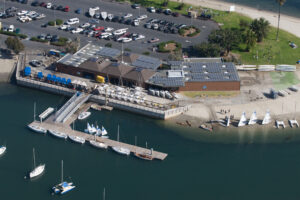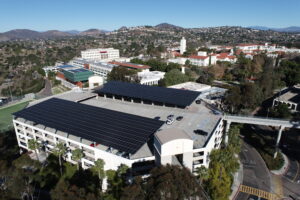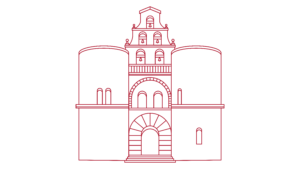San Diego State University is committed to promoting the use of solar energy as part of its commitment to sustainability. The university’s student-run Associated Students organization has been a strong solar champion, motivated by the students’ desire to make their campus more sustainable.
Associated Students goes beyond what many such student associations do. Not only does the organization advocate for student voices — it also manages various facilities and produces social, recreational, cultural, and educational programs. Most of the buildings that Associated Students operates are funded by the students, and the students have the authority to make major and minor decisions about their facilities.
The solar journey
Associated Students’ solar journey began in 2008 with a solar installation on the Associated Students Mission Bay Aquatic Center, which became the first commercial-scale facility in San Diego to achieve net energy zero and the first Associated Students structure to be certified LEED Platinum.

The students then set a goal for all their buildings to be net zero electricity by 2020; despite the pandemic slowing down progress on that goal, 1 megawatt (MW) of solar has been installed so far on various Associated Students buildings and parking structures, and all of the larger buildings operated by the organization have become LEED certified.
The most recent solar addition is at the Aztec Recreation Center, which underwent a remodel that involved removing all natural gas and making the facility all electric. The Aztec Recreation Center already hosts 250 kilowatts (kW) of solar, and Associated Students is now adding 750 kW to support the increased electrical load — 650 kW on an adjacent parking structure and 100 kW on the roof of a new building of the Center.
The existing 1 MW of solar at Associated Students facilities was already producing about 1.5 million kilowatt-hours (kWh) of electricity annually. The additional 750 kW will generate about 1.25 million kWh annually, bringing the total to 2.75 million kWh. That will cover approximately 60% of the 4.5 million kWh total annual energy usage of the Associated Students.
Financing the projects
SDSU students have voted to create dedicated funding to support their sustainability goals. This student fee funding allowed Associated Students to pay cash for some of their smaller solar systems and utilize debt financing for larger ones, including two new LEED double platinum buildings.
While saving money is not the only motivation for the students, the projects are cost-effective because they allow Associated Students to lower their electricity costs significantly. SDSU produces most of its own energy from a cogeneration plant on campus and procures the rest of its energy from SDG&E and through a Direct Access agreement negotiated by the California State University system. As a result, the solar installations provide significant savings over time — especially as electricity costs continue to rise.
Still, because of the major renovation work on the Aztec Recreation Center, Associated Students needed additional upfront cash to fund the latest solar project. They could have waited several more years for their fund to grow again, but given the climate crisis and the urgency of now, they elected instead to boldly move forward with solar by reaching out to CollectiveSun and our team of finance and construction experts, including our philanthropic partner BQuest Foundation. Because solar projects are often rife with complexities and challenges, it was crucial to have an expert project partner.
Lessons learned
Associated Students, with its focus on sustainability, has prioritized energy efficiency, electrification, and solar projects for its facilities for over a decade. But being more nimble alone would not ensure the success of their solar projects. Associated Students staff, students, facilities team, and SDSU administration worked collaboratively to make the solar projects successful.

The organization also acknowledged that having employees experienced with solar projects can ensure that potential structural or electrical issues are addressed before entering into a contract for a project.
For example, parking structures are often built to minimum code specifications, and the roofs of older buildings may not be strong enough to support solar panels. Conducting a structural study of the project before even looking for contractors can help identify and eliminate potential risks like these and others resulting in fewer challenges and reduced costs. We are proud to have partnered with Associated Students on this project.
Looking Ahead

The Associated Students sustainability program has three goals:
- Reduce energy usage of all its buildings, which includes LEED certification.
- Lead the university into more sustainable operations.
- Lead the students into a more sustainable lifestyle.
Solar has been a key part of all three goals, and Associated Students isn’t done yet. The goal remains to get to net zero electricity, and the organization is looking at more parking structures and unused land for potential future solar projects.
The main SDSU campus has space for about 4 MW of additional solar arrays, and in an effort separate from that of Associated Students, is considering adding 3-4 MW.
With added solar, SDSU will have an opportunity to lower its electricity costs, especially as the cost of electricity from the grid goes up. For the students, these cost savings will be welcome, though sustainability remains the top priority.
